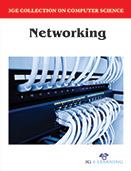
With fast-paced use of computer networks we came across different advanced concepts and techniques in networking. A computer network contains assimilation of computers, printers and other equipment that is linked together in order to communicate with each other. From the static routing to dynamic routing and now going from layer 2 addressing to layer 3 addressing and to layer 2.5 in type of Multi-Protocol Label Switching, need for more reliable and competent networking demand goes for ever. Fulfilling these demands, the current advances that takes in networking is the concept of Software Defined Network (SDN) and Network Function Virtualization (NFV), which appears as the current trends in the area of networking and changes the consequence of networking. The physical media can be used to exchange information once this information has been converted into a suitable electrical signal. Entire telecommunication courses and textbooks are devoted to the problem of converting analog or digital information into an electrical signal so that it can be transmitted over a given physical link. In this book, we consider simple schemes that allow transmitting information over an electrical cable. This enables us to highlight the key problems when transmitting information over a physical link.
This book is packed with the literature on modern computer networks with a focus on performance and quality of service. Wired and wireless/mobile networks today are working in concert and need to be studied together, rather than distinctly. Multimedia applications are ever more important and need to be given suitable depiction relative to traditional data applications. This book covers these topics with an emphasis on underlying principles and core concepts. Information and communication are two of the most important strategic issues for the success of every enterprise. While today nearly every organization uses a substantial number of computers and communication tools (telephones, fax, and personal gadgets), they are often still isolated. While managers today are able to use the newest applications, many departments still do not communicate and much needed information cannot be readily accessed.
To overcome these obstacles in an effective usage of information technology, computer networks are necessary. They are a new paradigm of organization of computer systems produced by the need to merge computers and communications. At the same time they are the means to converge the two areas; the unnecessary distinction between tools to process and store information and tools to collect and transport information can disappear. Computer networks can manage to put down the barriers between information held on several systems. Only with the help of computer networks can a borderless communication and information environment be built.
This book is designed for undergraduate and graduate student’s courses in computer networking. By focusing on explanations rather than collections of facts, it is intended primarily for learning, rather than reference.